Pandas Check If 2 Dataframes Are Equal
Data comparison is a crucial aspect of data analysis and manipulation. When working with pandas, a powerful library for data manipulation, it becomes essential to verify if two dataframes are equal. However, comparing two dataframes in pandas can be a daunting task, especially when dealing with large datasets. In this article, we will explore efficient ways to check if two dataframes are equal, along with helpful functions and techniques to handle varying scenarios.
Efficient ways to check if two dataframes are equal:
1. Using the `equals()` function:
The simplest way to check if two dataframes are equal is by using the `equals()` function provided by pandas. This function compares the shape, column names, and element-wise values of the dataframes and returns True or False based on their equality. Here’s an example:
“`python
import pandas as pd
df1 = pd.DataFrame({‘A’: [1, 2], ‘B’: [3, 4]})
df2 = pd.DataFrame({‘A’: [1, 2], ‘B’: [3, 4]})
print(df1.equals(df2)) # Output: True
“`
2. Comparing the shape and column names:
Another efficient way to check if two dataframes are equal is by comparing their shape and column names. This approach is useful when the order of rows or columns is not significant. Here’s an example:
“`python
import pandas as pd
df1 = pd.DataFrame({‘A’: [1, 2], ‘B’: [3, 4]})
df2 = pd.DataFrame({‘B’: [3, 4], ‘A’: [1, 2]})
if df1.shape == df2.shape and set(df1.columns) == set(df2.columns):
print(“Dataframes are equal”)
else:
print(“Dataframes are not equal”)
“`
3. Comparing the values element-wise:
To compare the values of two dataframes element-wise, you can use the `==` operator or the `compare()` function provided by pandas. The `compare()` function provides additional functionalities such as highlighting the differences between the two dataframes. Here’s an example using the `compare()` function:
“`python
import pandas as pd
df1 = pd.DataFrame({‘A’: [1, 2], ‘B’: [3, 4]})
df2 = pd.DataFrame({‘A’: [1, 3], ‘B’: [3, 4]})
diff = df1.compare(df2)
if diff.empty:
print(“Dataframes are equal”)
else:
print(“Dataframes are not equal”)
print(diff)
“`
4. Ignoring the order of columns:
In some scenarios, the order of columns may not be significant. To compare two dataframes while ignoring the order of columns, you can sort the columns alphabetically before comparison. Here’s an example:
“`python
import pandas as pd
df1 = pd.DataFrame({‘A’: [1, 2], ‘B’: [3, 4]})
df2 = pd.DataFrame({‘B’: [3, 4], ‘A’: [1, 2]})
df1_sorted = df1.sort_index(axis=1)
df2_sorted = df2.sort_index(axis=1)
print(df1_sorted.equals(df2_sorted)) # Output: True
“`
5. Ignoring the order of rows:
Similar to ignoring the order of columns, you may encounter situations where the order of rows is not significant. In such cases, you can sort the rows based on a particular column or set of columns before comparison. Here’s an example:
“`python
import pandas as pd
df1 = pd.DataFrame({‘A’: [1, 2], ‘B’: [4, 3]})
df2 = pd.DataFrame({‘A’: [2, 1], ‘B’: [3, 4]})
df1_sorted = df1.sort_values(by=[‘A’])
df2_sorted = df2.sort_values(by=[‘A’])
print(df1_sorted.equals(df2_sorted)) # Output: True
“`
6. Handling missing or NaN values:
When comparing dataframes with missing or NaN values, you may need to handle them differently. Pandas provides functions such as `fillna()` or `dropna()` that allow you to handle missing values before comparison. Here’s an example:
“`python
import pandas as pd
import numpy as np
df1 = pd.DataFrame({‘A’: [1, 2, np.nan], ‘B’: [3, 4, 5]})
df2 = pd.DataFrame({‘A’: [1, 2, np.nan], ‘B’: [3, np.nan, 5]})
df1_filled = df1.fillna(0)
df2_filled = df2.fillna(0)
print(df1_filled.equals(df2_filled)) # Output: True
“`
7. Checking equality of categorical columns:
If your dataframes contain categorical columns, you may need to explicitly convert them to the ‘category’ data type before comparison. This ensures that the categories are compared accurately. Here’s an example:
“`python
import pandas as pd
df1 = pd.DataFrame({‘A’: pd.Categorical([‘a’, ‘b’, ‘a’], categories=[‘a’, ‘b’]), ‘B’: [1, 2, 3]})
df2 = pd.DataFrame({‘A’: pd.Categorical([‘b’, ‘a’, ‘a’], categories=[‘a’, ‘b’]), ‘B’: [1, 2, 3]})
print(df1.equals(df2)) # Output: False
“`
8. Comparing indexes of the dataframes:
In some cases, you may want to compare only the indexes of the dataframes and not the values. Here’s an example:
“`python
import pandas as pd
df1 = pd.DataFrame({‘A’: [1, 2], ‘B’: [3, 4]})
df2 = pd.DataFrame({‘A’: [5, 6], ‘B’: [7, 8]})
print(df1.index.equals(df2.index)) # Output: True
“`
9. Checking the equality of subsets of dataframes:
Sometimes, you may want to check if specific subsets of dataframes are equal. In such cases, you can use slicing techniques to extract the desired subsets and perform the equality check. Here’s an example:
“`python
import pandas as pd
df1 = pd.DataFrame({‘A’: [1, 2, 3], ‘B’: [4, 5, 6]})
df2 = pd.DataFrame({‘A’: [1, 2, 3], ‘B’: [4, 5, 6], ‘C’: [7, 8, 9]})
subset_df1 = df1[[‘A’, ‘B’]]
subset_df2 = df1[[‘A’, ‘B’]]
print(subset_df1.equals(subset_df2)) # Output: True
“`
FAQs:
Q: How can I use assert_frame_equal to check if two dataframes are equal?
A: The `assert_frame_equal` function from the Pandas library provides an assertion tool specifically designed to compare two dataframes. It raises an AssertionError if the dataframes are not equal. Here’s an example:
“`python
import pandas as pd
from pandas.testing import assert_frame_equal
df1 = pd.DataFrame({‘A’: [1, 2], ‘B’: [3, 4]})
df2 = pd.DataFrame({‘A’: [1, 2], ‘B’: [3, 4]})
assert_frame_equal(df1, df2)
“`
Q: How is pandas `equals()` function different from `assert_frame_equal`?
A: The `equals()` function is used to check if two dataframes are equal and returns a boolean value (True or False). On the other hand, `assert_frame_equal` is an assertion tool that raises an AssertionError if the dataframes are not equal.
Q: Can I compare two dataframes and find the difference between them?
A: Yes, you can use various pandas functions and techniques to compare two dataframes and find the differences between them. For example, you can use the `compare()` function to highlight the differences, or use set operations to find the unique values in each dataframe.
Q: How do I perform an inner join between two dataframes in pandas?
A: You can use the `merge()` function with the `how=’inner’` parameter to perform an inner join between two dataframes. This function allows you to combine the matching rows from both dataframes based on common values in specified columns.
In conclusion, pandas provides several efficient ways to check if two dataframes are equal. By using functions such as `equals()`, `compare()`, and techniques like sorting, handling missing values, and checking specific subsets, you can easily compare dataframes for equality. These methods are invaluable for ensuring the accuracy and reliability of your data analysis tasks.
How To Check If Two Pandas Dataframes Are Equal In Python (Example) | Equals() Function Explained
How To Compare Between Two Dataframes In Pandas?
Pandas is a powerful data manipulation library widely used in data analysis and data science. It provides numerous functionalities to handle and compare datasets efficiently. When working with pandas, a common task often involves comparing two DataFrames to identify similarities, differences, or any other relevant insights. In this article, we will explore different methods to compare between two DataFrames in pandas and provide examples of their usage.
Comparing DataFrame Structures:
Before comparing the actual values between two DataFrames, it is essential to verify if their structures are identical. The following methods are commonly used to accomplish this:
1. Using the `equals()` method:
The `equals()` method checks if the columns and indices of two DataFrames are equivalent. It returns a boolean value indicating whether the two DataFrames have matching structures. Let’s consider an example where we have two DataFrames: df1 and df2. We can compare their structures using the following code snippet:
“`python
df1.equals(df2)
“`
If the structures match, the method will return True; otherwise, it will return False.
2. Comparing column and index labels:
Another way to ensure the equivalence of two DataFrames is by comparing their column and index labels. This can be achieved by comparing the outputs of `df1.columns.equals(df2.columns)` and `df1.index.equals(df2.index)`. If both comparisons return True, the DataFrames have matching structures.
Comparing DataFrame Values:
Once we have established that the structures of the two DataFrames are identical, we can proceed with comparing their actual values. Various methods can be employed to accomplish this:
1. Using the `equals()` method:
The `equals()` method can also be used to compare the values between two DataFrames. It checks if the corresponding elements in both DataFrames are equal. Let’s consider an example where we have two DataFrames: df1 and df2. We can compare their values using the following code snippet:
“`python
df1.equals(df2)
“`
If all corresponding elements are equal, the method will return True; otherwise, it will return False.
2. Using the `==` operator:
The `==` operator compares the corresponding elements between two DataFrames element-wise and returns a DataFrame of boolean values indicating equality or inequality. This method is particularly useful when we want to identify specific differences between the two DataFrames. The code snippet below demonstrates how to use the `==` operator to compare values between df1 and df2:
“`python
comparison = df1 == df2
“`
The resulting DataFrame, ‘comparison,’ will contain True for matching elements and False for non-matching elements.
3. Using the `compare()` method:
Pandas provides a handy `compare()` method to compare values between two DataFrames. This method produces a DataFrame containing the differences or mismatches between the two DataFrames. The syntax for using the `compare()` method is as follows:
“`python
df1.compare(df2)
“`
The resulting DataFrame will consist of three columns: ‘self,’ ‘other,’ and ‘diff.’ The ‘self’ column represents the corresponding elements from the first DataFrame (df1), the ‘other’ column represents the corresponding elements from the second DataFrame (df2), and the ‘diff’ column displays the absolute differences between them.
FAQs:
Q1. What is the significance of comparing DataFrame structures before comparing values?
A. Comparing DataFrame structures is vital to ensure that the subsequent value comparisons are
How To Check If Two Dataframes Have Same Index In Pandas?
When working with DataFrames in pandas, it is common to compare and check if two DataFrames have the same index. The index represents the row labels in a DataFrame and can provide valuable information about the data it holds. In this article, we will explore various methods to determine if two DataFrames share the same index in pandas.
Method 1: Using the equals() method
The first method to compare the indexes of two DataFrames is by using the equals() method. The equals() method returns a Boolean value indicating whether the two objects being compared are equal or not. In our case, we can use it to check if the indexes of our DataFrames are identical.
“`python
import pandas as pd
df1 = pd.DataFrame({‘A’: [1, 2, 3]}, index=[4, 5, 6])
df2 = pd.DataFrame({‘B’: [4, 5, 6]}, index=[4, 5, 6])
if df1.index.equals(df2.index):
print(“DataFrames have the same index”)
else:
print(“DataFrames have different indexes”)
“`
Output:
“`
DataFrames have the same index
“`
Method 2: Using the equals() method on index objects
Alternatively, we can directly compare the two index objects using the equals() method. This approach allows us to compare indexes without the need to create a DataFrame object.
“`python
import pandas as pd
df1_index = pd.Index([4, 5, 6])
df2_index = pd.Index([4, 5, 6])
if df1_index.equals(df2_index):
print(“Indexes are the same”)
else:
print(“Indexes are different”)
“`
Output:
“`
Indexes are the same
“`
Method 3: Using the isin() method
Another powerful method to check if two DataFrames have the same index is by using the isin() method. This method returns a Boolean array indicating whether each element of the index is contained in the specified values. By applying this method to both indexes and comparing the results, we can determine if they match.
“`python
import pandas as pd
df1 = pd.DataFrame({‘A’: [1, 2, 3]}, index=[4, 5, 6])
df2 = pd.DataFrame({‘B’: [4, 5, 6]}, index=[4, 5, 6])
if df1.index.isin(df2.index).all() and df2.index.isin(df1.index).all():
print(“DataFrames have the same index”)
else:
print(“DataFrames have different indexes”)
“`
Output:
“`
DataFrames have the same index
“`
Method 4: Using the set() function
The set() function can be used to compare the indexes of two DataFrames. By converting the indexes into sets and applying the set() function, we can easily check for equality.
“`python
import pandas as pd
df1_index = pd.Index([4, 5, 6])
df2_index = pd.Index([4, 5, 6])
if set(df1_index) == set(df2_index):
print(“Indexes are the same”)
else:
print(“Indexes are different”)
“`
Output:
“`
Indexes are the same
“`
FAQs:
Q1. Can I compare the indexes of DataFrames with different lengths?
Yes, you can compare the indexes of DataFrames with different lengths. The comparison will evaluate if the existing indexes are equal. However, keep in mind that if the lengths differ, the extra elements will not be considered for the comparison.
Q2. What happens if one DataFrame has a MultiIndex, and the other has a regular index?
If one DataFrame has a MultiIndex column and the other has a regular index, the comparison between the indexes will return False, indicating that they are different.
Q3. How can I handle comparisons when filtering or merging DataFrames?
When filtering or merging DataFrames, the resulting DataFrame might have a different index structure or order. In such cases, consider resetting the indexes using the reset_index() method before performing the comparison.
Q4. Is it possible to compare indexes in hierarchical or multi-level DataFrames?
Yes, it is possible to compare indexes in hierarchical or multi-level DataFrames. However, the comparison needs to take the hierarchical level structure into consideration. You may need to use methods like equals(), isin(), or set() on each level’s index to determine if they are equal.
In conclusion, pandas provides multiple methods to check if two DataFrames have the same index. Whether you prefer comparing the equality of DataFrame index objects, applying the equals() method, or using set operations, these techniques can help you determine if the indexes match. Understanding how to compare indexes enables you to manipulate and analyze data efficiently within your pandas workflows.
Keywords searched by users: pandas check if 2 dataframes are equal Check two DataFrames are equal, assert_frame_equal, pandas assert_frame_equal, pandas equals, Compare two dataframes pandas and find the difference, pandas compare two dataframes, Inner join 2 dataframes pandas, Pandas compare
Categories: Top 67 Pandas Check If 2 Dataframes Are Equal
See more here: nhanvietluanvan.com
Check Two Dataframes Are Equal
DataFrames are essential data structures in pandas, the popular data manipulation and analysis library in Python. They offer a convenient way to organize and analyze data, making them a staple for data scientists and analysts. Often, you might find yourself in a situation where you need to compare two DataFrames to check if they are equal. This can be a challenging task, especially when dealing with large datasets. In this article, we will explore various approaches to check if two DataFrames are equal, outlining the steps and highlighting important considerations.
Understanding DataFrames
Before diving into the comparison techniques, let’s briefly review what DataFrames are. A DataFrame is a two-dimensional labeled data structure with columns of potentially different types. It can be thought of as a table, where each column represents a variable, and each row corresponds to an observation or data point. DataFrames provide a powerful and flexible way to store, manipulate, and analyze data for a wide range of applications.
Comparing DataFrames
When comparing DataFrames, there are several aspects to consider. First, you need to determine what constitutes equality. Are you checking for exact equality, or are you interested in comparing specific columns or rows? Additionally, consider if the order of the rows or columns matters or if only the content matters. These considerations will dictate the approach you should take.
Approach 1: Using the equals() Method
The simplest way to compare two DataFrames for equality is by using the equals() method. The equals() method compares the shape and elements of both DataFrames. It returns a boolean value indicating whether the two DataFrames are equal or not.
Here’s an example:
“`python
import pandas as pd
df1 = pd.DataFrame({‘A’: [1, 2, 3], ‘B’: [4, 5, 6]})
df2 = pd.DataFrame({‘A’: [1, 2, 3], ‘B’: [4, 5, 6]})
print(df1.equals(df2))
“`
Running the above code will output `True`, indicating that the two DataFrames `df1` and `df2` are equal. However, keep in mind that the equals() method performs an element-wise comparison, meaning that the order of the rows and columns must also match.
Approach 2: Comparing Columns or Rows
In some cases, you might be interested in comparing specific columns or rows rather than the entire DataFrame. To achieve this, you can use logical operators to compare individual columns or rows. For example, you can use the equality operator (`==`) to compare two columns:
“`python
import pandas as pd
df1 = pd.DataFrame({‘A’: [1, 2, 3], ‘B’: [4, 5, 6]})
df2 = pd.DataFrame({‘A’: [1, 4, 3], ‘B’: [4, 5, 6]})
print(df1[‘A’] == df2[‘A’])
“`
This will output a pandas Series where each element is `True` if the corresponding values in the ‘A’ column of `df1` and `df2` are equal and `False` otherwise.
Similarly, you can use the `all()` or `any()` functions to check if all or any elements in a column or row are equal. For example:
“`python
import pandas as pd
df1 = pd.DataFrame({‘A’: [1, 2, 3], ‘B’: [4, 5, 6]})
df2 = pd.DataFrame({‘A’: [1, 4, 3], ‘B’: [4, 5, 6]})
print((df1[‘A’] == df2[‘A’]).all())
“`
In this case, `(df1[‘A’] == df2[‘A’])` creates a boolean Series, and the `all()` function checks if all elements are `True`.
Approach 3: Using the compare() Method
Another useful method provided by pandas is compare(). The compare() method allows you to compare two DataFrames and returns a DataFrame containing the differences between them.
Here’s an example:
“`python
import pandas as pd
df1 = pd.DataFrame({‘A’: [1, 2, 3], ‘B’: [4, 5, 6]})
df2 = pd.DataFrame({‘A’: [1, 4, 3], ‘B’: [4, 5, 7]})
print(df1.compare(df2))
“`
The output will display the differences between `df1` and `df2` in a tabular format, indicating the column name, index, and the differing values.
FAQs
Q: What if the order of the rows or columns does not matter?
A: If the order does not matter, you can sort the DataFrames before comparing them using the sort_values() or sort_index() methods. This ensures that the order of the rows or columns is consistent across DataFrames.
Q: Can I check for equality ignoring NaN values?
A: Yes. In pandas, you can use the equals() method with the `na` argument set to `False` to consider NaN values as equal. This can be useful when dealing with missing data.
Q: How can I compare DataFrames with different column names?
A: If the column names are different between the two DataFrames, you can use the rename() method to rename the columns to a common naming convention before comparing them.
In conclusion, checking if two DataFrames are equal is an important task in data analysis. By utilizing pandas’ built-in methods such as equals(), logical operators, and compare(), you can compare DataFrames with ease. It’s crucial to consider the specific requirements of your analysis, such as column or row comparison and the order of elements, before choosing the appropriate approach. With the knowledge and techniques provided in this article, you are now equipped to confidently compare DataFrames in your data science endeavors.
Assert_Frame_Equal
Syntax:
assert_frame_equal(left, right, **kwargs)
Parameters:
– left: The first DataFrame to be compared
– right: The second DataFrame to be compared
– **kwargs: Additional keyword arguments that can be passed to customize the behavior of the function, such as allowing or ignoring values with NaN, specifying the error message to be displayed in case of inequality, etc.
Usage:
The assert_frame_equal function compares two DataFrames object and raises an AssertionError if they are not equal. If the objects are equal, no exception is raised, indicating the successful match.
For example, let’s consider two DataFrames: df1 and df2. To compare them, we can simply use assert_frame_equal as follows:
“`python
import pandas as pd
from pandas.testing import assert_frame_equal
# Creating sample DataFrames
df1 = pd.DataFrame({‘A’: [1, 2, 3], ‘B’: [4, 5, 6]})
df2 = pd.DataFrame({‘A’: [1, 2, 3], ‘B’: [4, 5, 6]})
# Comparing DataFrames
assert_frame_equal(df1, df2)
“`
In the above example, the assert_frame_equal function will not raise any exception as the two DataFrames (df1 and df2) are equal. However, if there is any inequality between the two DataFrames, an AssertionError will be raised.
Now, let’s discuss some frequently asked questions related to assert_frame_equal:
FAQs:
Q1. Can assert_frame_equal compare DataFrames with different column orders?
Yes, assert_frame_equal is capable of comparing DataFrames with different column orders. By default, it matches the columns by name, ignoring the order. However, if you want to compare DataFrames with the same column order, you can sort the columns before comparing them.
Q2. What happens if the two DataFrames have a different number of rows or columns?
If the two DataFrames have a different number of rows or columns, assert_frame_equal will raise an AssertionError, indicating the inequality. To handle scenarios where you expect varying row or column counts, you can use additional parameters like `check_like`, `check_names`, or `check_dtype` to ignore certain aspects of comparison.
Q3. How can assert_frame_equal handle NaN values?
By default, assert_frame_equal considers NaN values as equal. If you want to exclude NaN values from the comparison, you can pass `check_exact=False` or use `check_like` with the `nan_equals` parameter set to False.
Q4. Is it possible to assert_frame_equal with a tolerance for floating-point comparison?
Yes, assert_frame_equal provides the option to set a tolerance level for floating-point comparison. The `check_less_precise` parameter allows you to specify the number of significant digits to consider while comparing floating-point numbers. This can be helpful when dealing with floating-point imprecision.
Q5. How can I customize the error message when assert_frame_equal raises an AssertionError?
To customize the error message, you can pass the `msg` parameter to assert_frame_equal. For example:
“`python
assert_frame_equal(df1, df2, msg=’DataFrames are not equal!’)
“`
In this case, if the two DataFrames are not equal, the error message “DataFrames are not equal!” will be displayed.
That concludes our comprehensive discussion on assert_frame_equal in Python’s pandas library. We explored its syntax, parameters, and usage along with some frequently asked questions. By using assert_frame_equal, you can confidently validate the equality of DataFrames, ensuring data integrity and accuracy in your data analysis tasks.
Pandas Assert_Frame_Equal
When working with data analysis and manipulation, the ability to compare and verify dataframes is of utmost importance. Pandas, the popular data manipulation library in Python, provides a handy function called `assert_frame_equal` that allows users to compare two dataframes and assert whether they are equal or not. In this article, we will explore the functionality and usage of `assert_frame_equal` in depth, and provide some frequently asked questions (FAQs) at the end to address common concerns.
## Understanding `assert_frame_equal`
The `assert_frame_equal` function is part of the `pandas.testing` module and is designed to check if two given dataframes are equal or nearly equal. It can be used as a utility for testing purposes or for general data comparison tasks. The function compares indexes, columns, and values of the dataframes to determine their equality.
## Basic Usage
The basic syntax for using `assert_frame_equal` is as follows:
“`
pandas.testing.assert_frame_equal(df1, df2, check_dtype=False, …)
“`
Here, `df1` and `df2` are the dataframes to be compared. The `check_dtype` parameter is an optional argument that specifies whether the data types of the columns should also be checked. By default, it is set to `False`. Additional arguments, such as `check_index_type` and `check_column_type`, can be used to customize the comparison behavior.
If the dataframes are equal, `assert_frame_equal` will not raise an exception and the program will continue execution. However, if the dataframes are not equal, an informative error message will be displayed, pointing out the differences between the two dataframes.
## Customizing the Comparison
The `assert_frame_equal` function provides several optional parameters to customize the comparison process. By default, it checks the indexes, columns, and values for equality. However, we can selectively exclude certain aspects from the comparison by setting corresponding parameters to `False`. Some useful parameters are:
– `check_exact`: Determines whether floating-point values should be compared exactly or to a certain degree of tolerance (default is `True`).
– `check_names`: Controls whether column and index names should also be compared (default is `True`).
– `check_like`: Specifies whether column and index order should be considered during comparison (default is `False`).
– `check_less_precise`: Determines whether decimals should be rounded before comparison (default is `False`).
– `check_categorical`: Controls the comparison of categorical data type columns (default is `True`).
These parameters can be passed as keyword arguments to `assert_frame_equal`, allowing users to tailor the comparison to their specific needs.
## Comparing Dataframes with NaN Values
When working with dataframes containing missing or NaN (Not a Number) values, specifying how `assert_frame_equal` handles them becomes crucial. By default, NaN values are considered equal, even if they have different underlying types (i.e., string NaN and float NaN). However, if stricter comparison is desired, the `check_exact` parameter can be set to `True`, ensuring that NaN values of different types are considered unequal.
## Frequently Asked Questions
Q1. Can `assert_frame_equal` compare dataframes with different column order?
A1. By default, the comparison does not consider the order of columns. However, if you want to include column order in the comparison, you can set `check_like=True` when using `assert_frame_equal`.
Q2. How does `assert_frame_equal` handle numerical precision differences?
A2. By default, floating-point values are compared within a certain tolerance, allowing for small differences in numerical precision. If you want to compare the floating-point values exactly, set `check_exact=True`.
Q3. Can `assert_frame_equal` compare dataframes with different types of indexes?
A3. Yes, `assert_frame_equal` can handle dataframes with different index types. The default behavior is to compare both the type and values of the indexes.
Q4. Does `assert_frame_equal` check for equality of categorical data?
A4. Yes, `assert_frame_equal` includes checks for categorical data. By default, it compares both the category values and the categories’ order.
Q5. How does `assert_frame_equal` handle missing or NaN values?
A5. By default, NaN values are considered equal, even if they have different underlying types. If stricter comparison is desired, set `check_exact=True` to consider NaN values of different types unequal.
In conclusion, `assert_frame_equal` is a powerful tool in the Pandas library that allows for easy and customizable comparison of dataframes. Whether you are performing unit testing or simply verifying the accuracy of your data, this function proves to be a valuable asset. By understanding its functionality and parameters, users can ensure that their dataframe comparisons are accurate and reliable.
Images related to the topic pandas check if 2 dataframes are equal

Found 50 images related to pandas check if 2 dataframes are equal theme

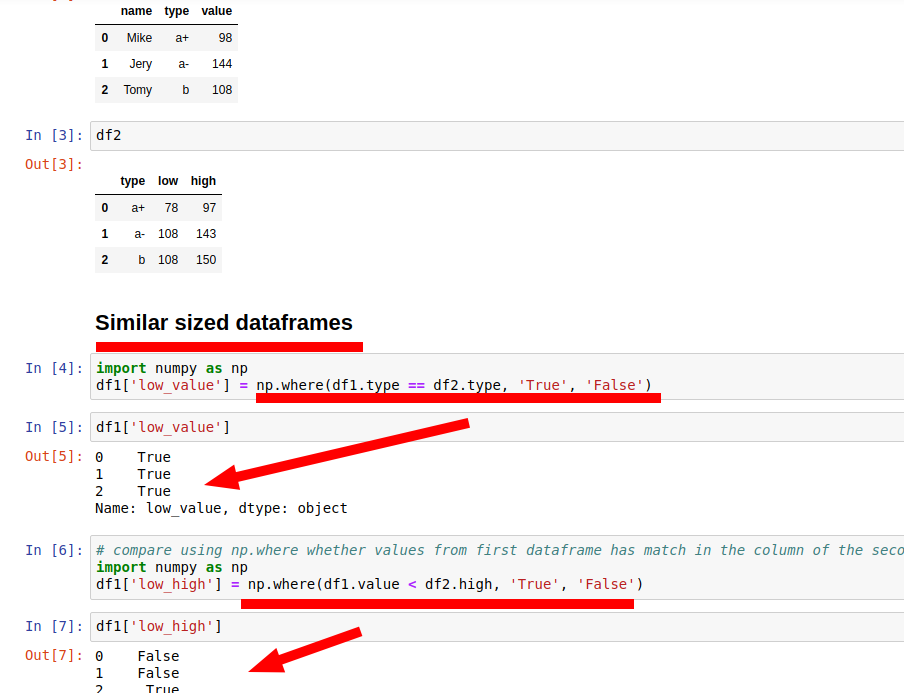

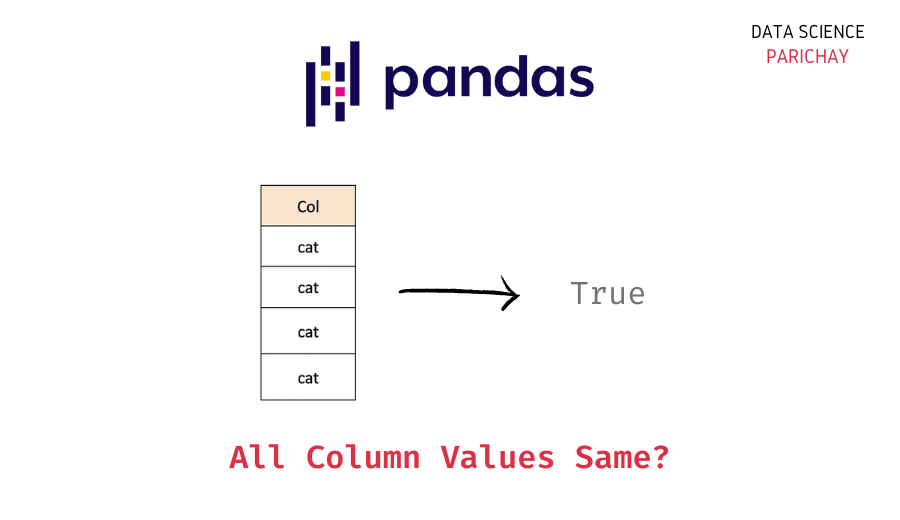



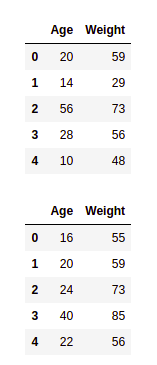




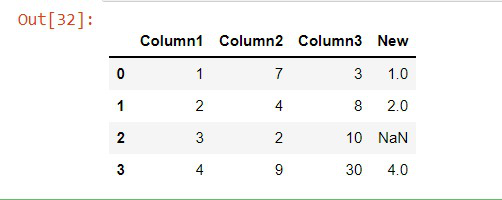
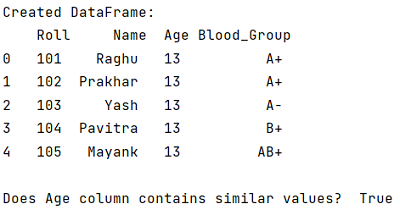




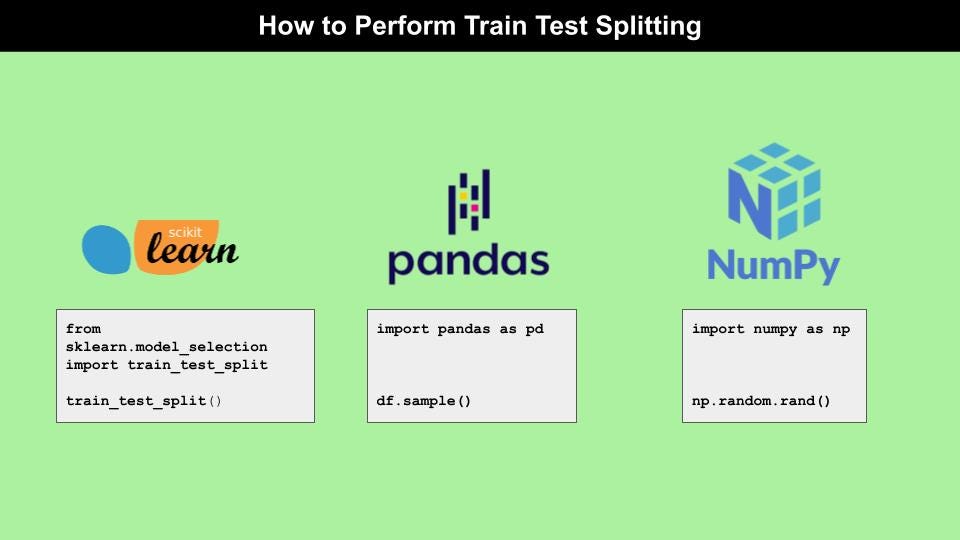

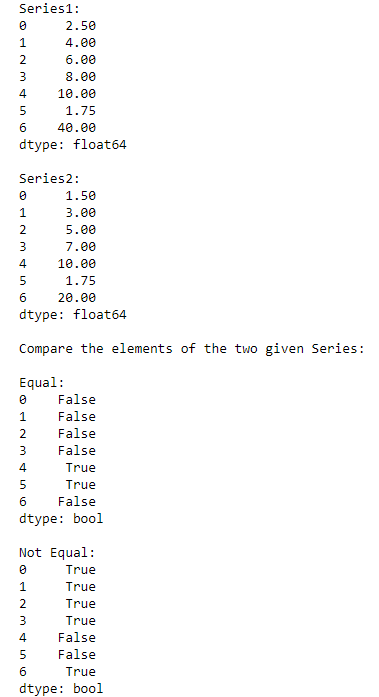







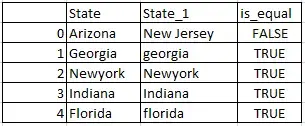




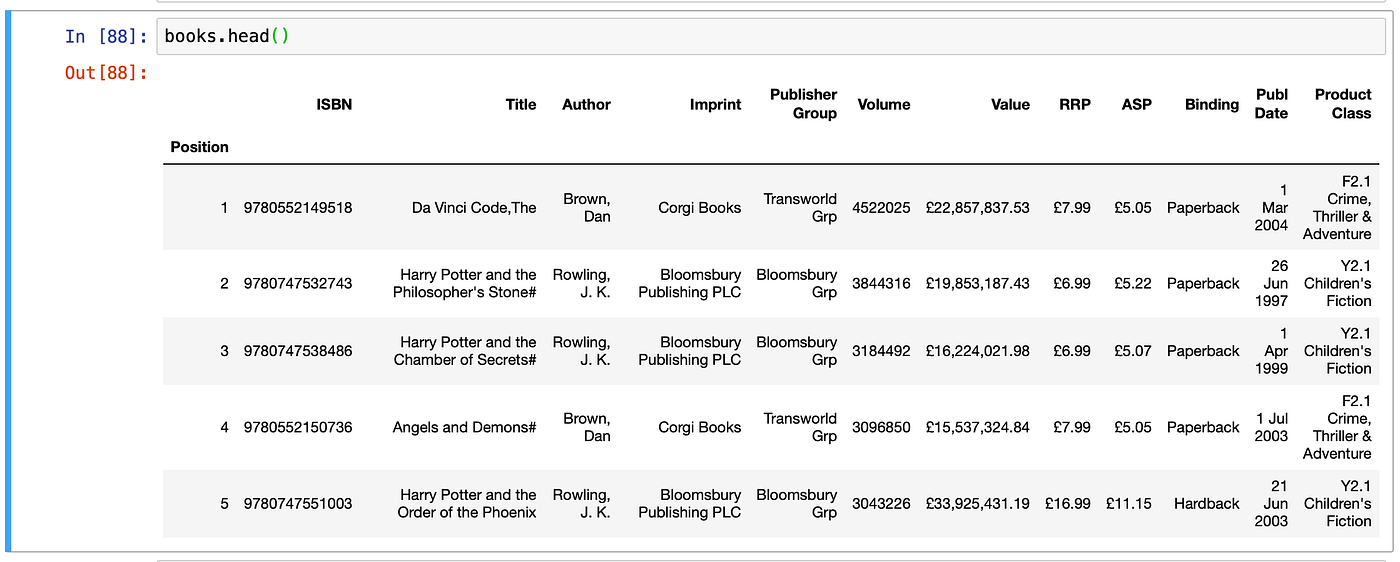
Article link: pandas check if 2 dataframes are equal.
Learn more about the topic pandas check if 2 dataframes are equal.
- pandas.DataFrame.equals — pandas 2.0.3 documentation
- Pandas DataFrame equals() Method – W3Schools
- Comparing two pandas dataframes for differences
- How to Compare Values between two Pandas DataFrames – Data to Fish
- Python | Pandas Index.equals() – GeeksforGeeks
- Pandas compare columns in two data frames | kanoki
- Pandas: How to Check if Two DataFrames Are Equal – Statology
- Check If Two pandas DataFrames are Equal in Python
- Python | Pandas dataframe.equals() – GeeksforGeeks
- Python Pandas Check if two Dataframes are exactly same
- A Simple Way to Compare Pandas DataFrames in Unit Tests
- Compare Two DataFrames Row by Row – Spark By {Examples}
See more: https://nhanvietluanvan.com/luat-hoc/